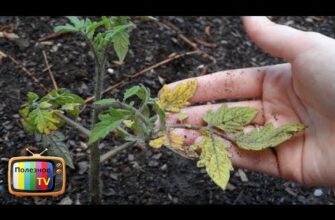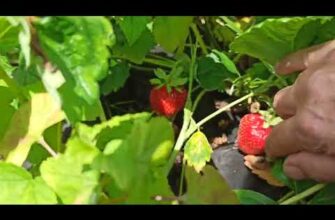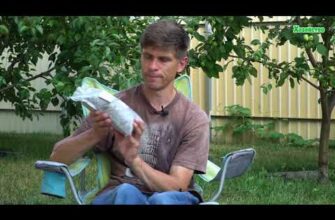- Подготовка почвы для посадки томатов
- Выбор места
- Подготовка грунта
- Добавление питательных веществ
- Выбор удобрений для посадки
- Обработка почвы перед посадкой
- Посев томатов и уход за саженцами
- Правильная техника посева
- Размещение саженцев на грядке
- Уход за молодыми растениями
- Добавки для улучшения роста томатов
- 1. Органическое удобрение
- 2. Минеральные добавки
- 3. Увлажнение грунта
- 4. Подвязка саженцев
- Органические добавки для растений
- Минеральные добавки для томатов
- Подвязка саженцев томатов
- Правила подвязки растений
- 1. Выбор подходящей опоры
- 2. Правильная подвязка
- 3. Добавление опор и поддержка
- 4. Подкормка и полив
- Вопрос-ответ:
- Какие добавки можно использовать при посадке томатов?
- Как подвязать саженцы томатов?
- Какие органические удобрения лучше всего использовать при посадке томатов?
- Какие преимущества приносит подвязка саженцев томатов?
- Какую добавку лучше всего использовать для улучшения плодородия почвы?
- Видео:
- Сажаем сладкий перец. Чем полить перец для быстрого роста после высадки.

Посадка томатов — важный этап возделывания этой культуры. Чтобы саженцы хорошо прижились и дали обильный урожай, необходимо соблюдать определенные правила. Одно из главных условий успешной посадки — правильное подготовка лунки и грунта.
Перед посадкой сажаем в лунку необходимо добавить подходящие удобрения. Хорошим вариантом будет органическое удобрение, такое как перегной или компост. Они обогатят грунт необходимыми питательными веществами и способствуют укоренению саженцев. Также можно добавить минеральные удобрения, содержащие азот, фосфор, калий. Они помогут томатам лучше развиваться и укрепляться.
Когда грунт и лунка готовы, можно приступать к посадке саженцов. Обязательно нужно выбрать здоровые и сильные растения. Перед посадкой рекомендуется обрезать нижние листья, чтобы укоренение произошло быстрее и лучше. Саженцы следует укладывать в лунку на глубину, оставляя над землей только верхушку растения.
После посадки необходимо подвязать саженцы. Это позволит им правильно расти и защитит от повреждений. Для подвязки можно использовать специальные опоры, которые удерживают растение и позволяют ему свободно развиваться. Также можно использовать обычную веревку или проволоку, связав ее с опорой и прикрепив к стеблю томата.
Подготовка почвы для посадки томатов
Перед тем, как сажать томаты, необходимо подготовить почву. Это важный этап, который поможет обеспечить хороший урожай.
Выбор места

Для посадки томатов выбираем солнечное место, защищенное от сильных ветров. Томаты любят свет и тепло, поэтому открытая и хорошо освещенная площадка – отличный выбор.
Подготовка грунта

Прежде чем сажать томаты, необходимо подготовить грунт. Раскладываем лунки, оставляя между ними достаточное расстояние для роста растений. Лунки глубиной около 10-15 см обязательно удобряем до посадки.
Добавление питательных веществ
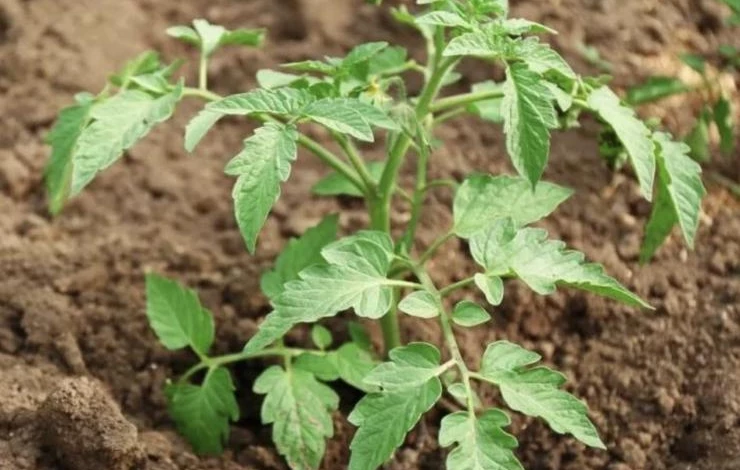
Для успешного развития саженцев томатов в грунт обязательно добавляем питательные вещества. Можно использовать комплексные минеральные удобрения или органические добавки, такие как перегной или компост. Важно не перегрузить почву удобрениями, следует придерживаться рекомендуемой дозировки.
Выбор удобрений для посадки
Правильный выбор удобрений при посадке томатов является важным этапом заботы о саженцах. Приготавливая лунку для посадки, обязательно добавьте удобрения, чтобы обеспечить растения необходимыми питательными веществами.
Основными удобрениями, которые рекомендуется использовать при посадке томатов, являются органические удобрения. Они позволяют создать благоприятную почву для развития саженцев. Одним из наиболее эффективных органических удобрений является перегноевая птичья или козья подстилка. Она богата микроэлементами и обеспечивает растения необходимыми питательными веществами для их роста и развития.
Также можно использовать минеральные удобрения, содержащие азот, фосфор и калий. Азот способствует активному росту растений, а фосфор и калий улучшают корневую систему и повышают устойчивость к болезням.
Кроме того, рекомендуется добавить в почву комплексные удобрения, которые содержат все необходимые элементы для роста томатов. Это поможет саженцам получить все необходимые питательные вещества и развиться крепкими и здоровыми растениями.
Обработка почвы перед посадкой
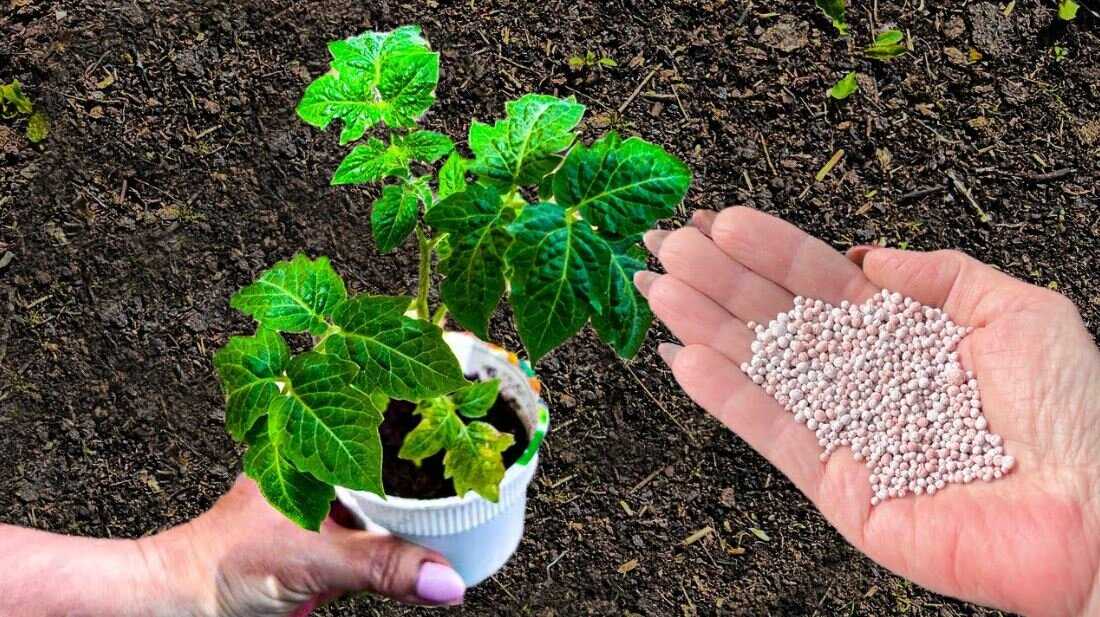
Перед посадкой томатов важно правильно подготовить грунт. Для этого можно добавить несколько полезных веществ, которые помогут растениям расти и развиваться. Одним из таких добавок может быть компост или перегной, который обогатит почву органическими веществами и питательными элементами.
Также рекомендуется использовать минеральные удобрения, такие как азот, фосфор и калий. Они обеспечат растения необходимыми микроэлементами и помогут им активно расти. Для улучшения структуры грунта можно добавить песок или торф, особенно если почва изначально слишком тяжелая или глинистая.
Перед посадкой томатов также необходимо подготовить место для каждого растения. Расстояние между растениями должно быть достаточным, чтобы они могли свободно расти и развиваться. Для каждого томата нужно выкопать отдельную лунку и разместить саженец в ней, укрепив его корни и дозаполнив лунку грунтом.
Обязательно подвязывайте саженцы томатов к опоре, чтобы предотвратить их перекручивание или повреждение. Для этого можно использовать специальные подвязки или просто растянуть веревку между опорами и привязать растение к ней. Это поможет поддерживать стебель томата в вертикальном положении и обеспечит ему необходимую поддержку во время роста и плодоношения.
Посев томатов и уход за саженцами

При посеве томатов обязательно добавьте питательные вещества в грунт. Для этого можно использовать органические удобрения, такие как перегноя, компост или специализированные добавки. Это поможет обеспечить хороший старт для саженцев и способствовать их росту и развитию.
Перед посадкой саженцы томатов следует аккуратно вынуть из горшка или контейнера. Для этого сделайте небольшую лунку в грунте и аккуратно выньте саженец с комом земли. Затем поместите саженец в лунку и закройте землей, прижимая ее к корням растения. Обратите внимание на то, чтобы саженец был установлен на такой же глубине, на которой он находился в горшке.
После посадки томаты требуют особого ухода. Регулярно поливайте растения, поддерживая влажность грунта. Обеспечьте саженцам достаточное освещение, чтобы они получали достаточное количество солнечного света. Удалите сорняки и проведите прополку, чтобы предотвратить конкуренцию сорняков за питательные вещества. Также не забудьте подвязать саженцы, чтобы предотвратить их повреждение под весом плодов.
Важно следить за состоянием растений и своевременно реагировать на возможные проблемы. Обратите внимание на признаки болезней или вредителей и примите меры по их предотвращению или лечению. Регулярно осматривайте растения и периодически применяйте необходимые меры ухода, чтобы обеспечить здоровый рост и хороший урожай томатов.
Правильная техника посева

Для успешного посева томатов необходимо обратить внимание на несколько важных моментов. Во-первых, выберите качественный грунт, который будет обеспечивать необходимые питательные вещества для растений. Если грунт не достаточно плодородный, рекомендуется добавить специальные удобрения или компост.
При посеве саженцев томатов важно обязательно создать небольшую лунку для каждого растения. В лунку следует добавить небольшое количество удобрений или перегноя, чтобы обеспечить хороший старт для саженца. После этого укажите глубину лунки, чтобы определить, как глубоко посадить саженец.
Для удобства дальнейшего ухода за растениями, рекомендуется подвязать саженцы томатов. Это позволит им расти вертикально и предотвратит повреждения плодов от контакта с грунтом. Для этого можно использовать специальные поддерживающие конструкции или просто прикрепить саженцы к растущим опорам.
Размещение саженцев на грядке
Правильное размещение саженцев томатов на грядке является одним из ключевых моментов для успешного выращивания растений. Перед посадкой обязательно подготовьте грунт: добавьте органические удобрения для обеспечения питательности почвы.
Для каждого саженца томата рекомендуется выкопать небольшую лунку в грунте. В нее поместите саженец, аккуратно расправив корни. Затем тщательно закройте лунку грунтом, придавая ему плотность вокруг стебля растения.
Чтобы обеспечить поддержку саженцам томатов и предотвратить их повреждение, обязательно подвяжите их к опоре. Для этого можно использовать деревянные или металлические кольца, которые будут служить опорой для растений.
Правильное размещение саженцев на грядке позволит им получить достаточно света, воздуха и питательных веществ из почвы. Также не забудьте учесть необходимое расстояние между растениями, чтобы они имели достаточно пространства для роста и развития.
Уход за молодыми растениями
Правильный уход за молодыми растениями — это важный этап в выращивании томатов. Главное: не забывайте о грунте, на котором саженцы будут расти. Важно, чтобы грунт был плодородным и хорошо дренированным, чтобы корни молодых растений могли развиваться без проблем.
Перед посадкой саженцы в лунку обязательно добавьте некоторые питательные добавки. Можно использовать органические удобрения, такие как перегной или компост, чтобы обогатить почву необходимыми питательными веществами. Это поможет растениям привиться и развиваться более активно.
Не забудьте подвязать молодые саженцы для их поддержки. Поставьте колышки рядом с каждым растением и аккуратно привяжите их к ним. Это поможет предотвратить перегибание стеблей и повреждение корневой системы. Правильное подвязывание саженцев обеспечит им оптимальный рост и развитие.
Добавки для улучшения роста томатов
При посадке томатов необходимо обязательно добавить несколько важных компонентов для улучшения их роста и развития. Подготавливаем лунку для посадки саженцев, добавляем несколько полезных ингредиентов.
1. Органическое удобрение
Для достижения хороших результатов в выращивании томатов рекомендуется добавить органическое удобрение в грунт перед посадкой. Это может быть перегной, компост или другое органическое вещество, которое позволит растениям получить все необходимые питательные вещества.
2. Минеральные добавки

Так стоп!!! Вы всё ещё не подписаны на наши каналы в Телеграмм и Дзен? Посмотрите: ТГ - (@historyfantasydetectivechat) и Дзен (https://dzen.ru/myshortsstorys)
Для обеспечения растений нужными минералами и микроэлементами рекомендуется добавить минеральные добавки в грунт. Это может быть специальный комплекс удобрений для томатов, содержащий азот, фосфор, калий и другие элементы, необходимые для здорового роста и развития растений.
3. Увлажнение грунта
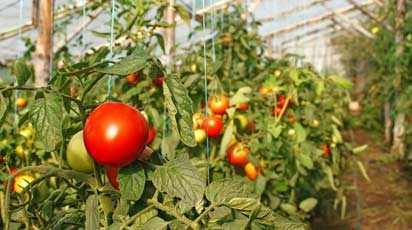
Для обеспечения хорошего роста томатов необходимо обязательно поддерживать оптимальный уровень влажности грунта. Для этого можно использовать специальные гидрогели или полимерные добавки, которые задерживают влагу в корневой зоне растений.
4. Подвязка саженцев
После посадки саженцев томатов необходимо обязательно подвязать их, чтобы предотвратить повреждение стеблей и побегов. Для этой цели можно использовать специальные подвязочные материалы или просто мягкие ленты. Подвязывая саженцы, обеспечиваем им опору и защиту от ветра и других внешних воздействий.
Органические добавки для растений
Подвязка томатов
При посадке томатов обязательно подвязывайте саженцы, чтобы они не лежали на грунте и не повреждались. Для этого можно использовать специальные поддержки или просто связать их нитками к опоре. Правильная подвязка поможет растению развиваться вертикально и улучшит доступ света и воздуха к листьям и плодам.
Добавки для грунта
Для успешного выращивания томатов важно добавить органические добавки в грунт. Они обогатят почву необходимыми питательными веществами и создадут оптимальную среду для роста растений. Можно использовать перегноя, компост, торф и другие органические удобрения. Они улучшат структуру грунта, увеличат его плодородие и способствуют развитию корневой системы томатов.
Посадка томатов в лунку
Одним из способов посадки томатов является посадка в лунку. Для этого нужно выкопать яму глубиной около 20-30 см и добавить в нее органические добавки, такие как перегной или компост. Затем сажаем рассаду томатов, укрепляем ее и хорошо поливаем. Посадка в лунку поможет растению легче прорасти и обеспечит его хорошим питанием из-за добавленных органических удобрений.
В итоге, использование органических добавок при посадке и уходе за томатами является важным аспектом успешного выращивания этих растений. Правильная подвязка, добавка органических удобрений в грунт и посадка в лунку способствуют здоровому и обильному росту томатов, а также улучшают качество и вкус плодов.
Минеральные добавки для томатов
Сажаем саженцы томатов
Перед посадкой томатов в грунт необходимо обязательно добавить некоторые минеральные добавки, чтобы обеспечить растения необходимыми питательными веществами. Сначала подготавливаем грунт, улучшая его с помощью органического удобрения, такого как перегной или компост. Затем добавляем минеральные добавки, чтобы дополнить питательные вещества в почве.
Добавляем необходимые минералы
Для томатов особенно важно обеспечить достаточное количество азота, фосфора и калия. Азот необходим для роста зеленой массы и образования листьев, фосфор способствует развитию корней и цветения, а калий укрепляет плоды и повышает их сопротивляемость к болезням. Для достижения оптимального баланса можно использовать комплексные минеральные удобрения, которые содержат все необходимые элементы.
Подвязываем саженцы томатов
После посадки саженцев томатов в грунт, необходимо подвязать их, чтобы они могли расти вертикально и не повреждались от соприкосновения с землей. Для этого можно использовать специальные подпятники или ставить опоры в виде палок или сеток. Важно подвязывать растения еще на ранней стадии, чтобы они не начали разрастаться в разные стороны и сохраняли свою форму.
Обеспечиваем растения необходимыми питательными веществами
Помимо минеральных добавок, также важно обеспечить растения томатов достаточным количеством воды и света. Регулярный полив и выращивание на солнечном месте помогут растениям развиваться и плодоносить более интенсивно. Также можно использовать органические удобрения, такие как чайное или кофейное основание, чтобы дополнительно питать растения.
Подвязка саженцев томатов
При посадке сажаем томаты на поддерживаемые, устойчивые каркасы или опоры, чтобы предотвратить повреждение растений и повысить урожайность.
Для подвязки саженцы томатов можно использовать различные материалы, включая веревки, проволоку или специальные пластиковые ремни.
Перед подвязкой рекомендуется обязательно добавить в грунт под саженцы компост или органические удобрения, чтобы обеспечить растения необходимыми питательными веществами.
При подвязке саженцы томатов следует оставлять промежуток между растениями, чтобы обеспечить нормальную циркуляцию воздуха и предотвратить заболевания.
Подвязка саженцев томатов помогает сохранить растения в вертикальном положении и предотвратить их загибание или ломкость при наличии плодов.
Подвязывая саженцы томатов, необходимо обращать внимание на их рост и своевременно регулировать высоту подвязки, чтобы растения не стали перерастать и не перекрывали солнечный свет для нижних частей растений.
Правила подвязки растений

Подвязка томатов – обязательный шаг в процессе их выращивания. Это позволяет предотвратить перекосы и повреждения стеблей, а также обеспечить лучшую доступность кислорода и питательных веществ к корням. Чтобы правильно подвязать саженцы, следует учесть несколько важных правил.
1. Выбор подходящей опоры
Перед посадкой томатов необходимо подготовить надежную опору. Она может быть выполнена из дерева, металла или пластика. Важно, чтобы опора была достаточно прочной и высотой не меньше 1,5 метра, чтобы обеспечить растениям достаточное пространство для роста.
2. Правильная подвязка

Оптимальным способом подвязки томатов является метод «лунка». Для этого необходимо вокруг стебля саженца сделать неглубокую лунку и аккуратно закрепить растение к опоре с помощью мягкого материала, например, специального садового шнура или ткани. Важно не затягивать подвязку сильно, чтобы не повредить стебель.
3. Добавление опор и поддержка

Помимо основной опоры, можно добавить дополнительные вертикальные или горизонтальные опоры, чтобы удерживать стебли растений и предотвратить их перекосы. Также можно использовать сетки или специальные поддерживающие стержни для распределения веса растения равномерно.
4. Подкормка и полив
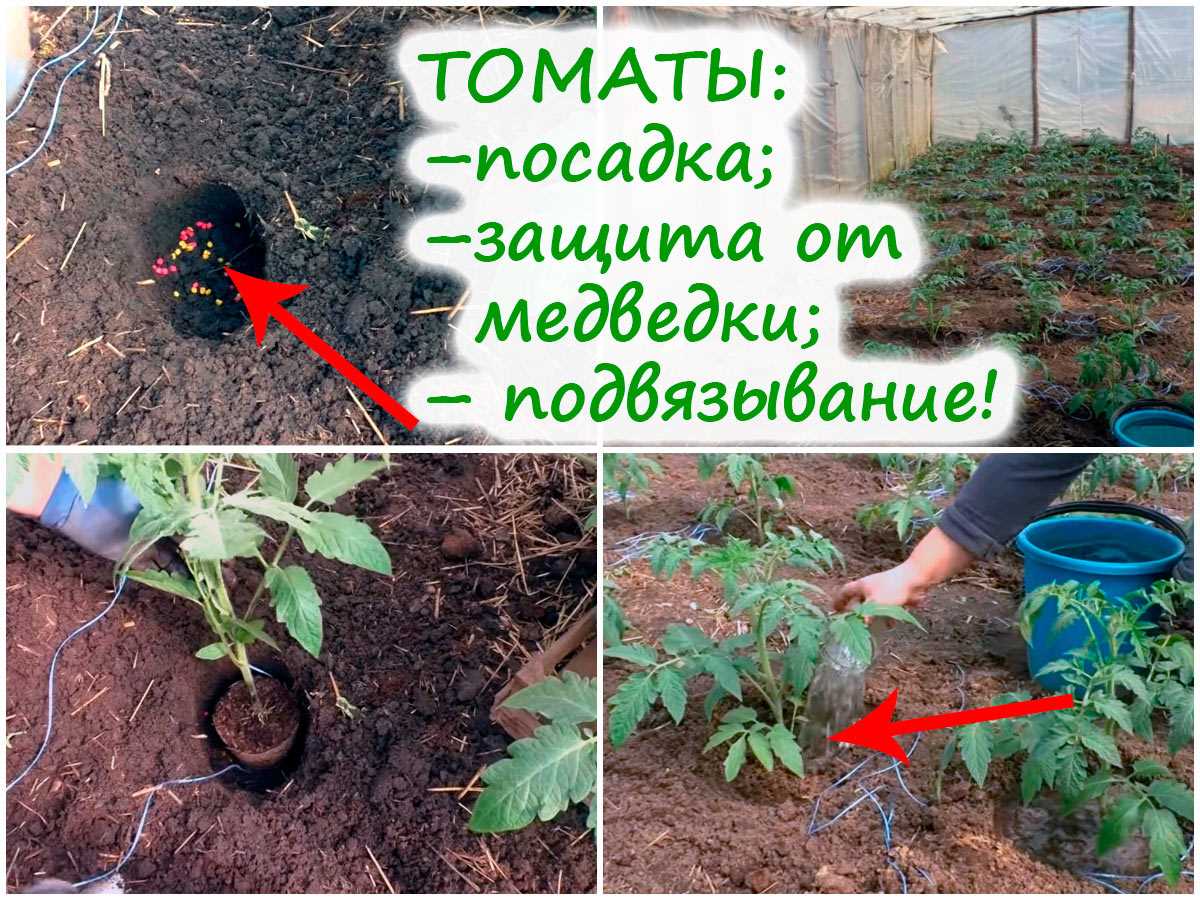
Правильная подвязка томатов позволяет обеспечить лучший доступ кислорода и питательных веществ к корням, что способствует более эффективному усвоению питательных веществ из грунта. Однако, для достижения максимального результата, растения также нуждаются в регулярной подкормке и поливе. Рекомендуется использовать специальные удобрения для томатов и следить за правильным режимом полива.
Вопрос-ответ:
Какие добавки можно использовать при посадке томатов?
При посадке томатов можно использовать различные добавки, такие как компост, перегной, яичная скорлупа, зола или органические удобрения. Они помогут обогатить почву необходимыми питательными веществами и создать оптимальные условия для роста и развития растений.
Как подвязать саженцы томатов?
Саженцы томатов можно подвязать с помощью поддерживающих стоек или специальных опор для томатов. Лучше всего использовать мягкие материалы, такие как нейлоновые стружки или веревки, чтобы не повредить стебли растений. Не забудьте регулярно проверять и подтягивать подвязку по мере роста растений.
Какие органические удобрения лучше всего использовать при посадке томатов?
При посадке томатов можно использовать различные органические удобрения, такие как компост, перегной, органические удобрения на основе морских водорослей или рыбий жир. Они содержат множество полезных микроэлементов и питательных веществ, которые способствуют здоровому росту и развитию растений.
Какие преимущества приносит подвязка саженцев томатов?
Подвязка саженцев томатов имеет несколько преимуществ. Во-первых, она обеспечивает поддержку растений, предотвращает их прогибание и ломкость стеблей под весом плодов. Во-вторых, она позволяет лучше проветривать растения и предотвращает развитие грибковых заболеваний. Кроме того, подвязанные растения легче ухаживать и собирать урожай.
Какую добавку лучше всего использовать для улучшения плодородия почвы?
Для улучшения плодородия почвы можно использовать различные добавки, но одной из наиболее эффективных является компост. Он обогащает почву органическими веществами, улучшает ее структуру, способствует удержанию влаги и обеспечивает растения необходимыми питательными веществами. Также полезно использовать перегной, яичную скорлупу, золу или органические удобрения, чтобы создать оптимальные условия для роста и развития томатов.


